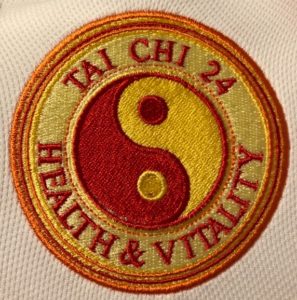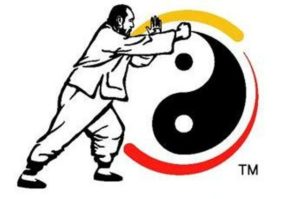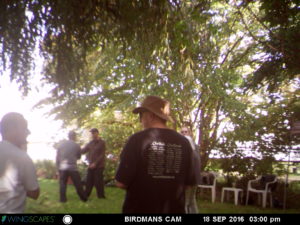Slanted FlyingJournal of Tai Chi Chuan
Training
What the “Unbendable Arm” Can Reveal About Taijiquan
But it is not uncommon for people who have no idea of what qi is, or who have never done anything special to cultivate their qi, to still be able to use the imagery of the hose with water rushing through it to prevent their arm from being bent. If the successful exercise does not require the special cultivation of a person’s qi, then the qi explanation seems less plausible.
Some modern researchers try to define the qi that circulates in the human body (as well as projects out from the body) as being tied to electromagnetic wave vibrations that can be tested using thermographs to measure changes in heat, or instruments that measure electrical current variations, etc. But I cannot see how heat or electrical currents could really provide a convincing substance that would prevent the arm from being bent under the conditions of the “unbendable arm” exercise.
Since one can feel the biceps and triceps during the “unbendable arm” and know that there is no significant tension in them, practitioners may be led to conclude that muscles are not being used in this exercise. Other explanations are therefore needed. If it is not something physical, then perhaps it is something mental (intent), or if the muscles are not being tensed, then perhaps it is tendons and/or ligaments (sinews), or fascia, instead.
In actuality though, even if it seems like we are not using muscles to hold our arm up, we are. But rather than the prominent muscles that are easily detected (the flexors and extensors, which are used to move our structure), we are using the smaller and deeper slow-twitch muscles that are used for stabilizing our structure.
So while the flexors and extensors are relaxed, and are therefore not needed in a successful “unbendable arm” exercise, we are using our stabilizer muscles; otherwise our arms would not be able to stay extended and the arm would not even be able to resist the force of gravity. If we were not using any arm muscles, then our arm would simply be hanging limply down at our sides.
Even though they are smaller and difficult to detect, the stabilizer muscles are quite strong, and their use seems effortless because this type of muscle (slow-twitch) uses little or no ATP. It is the lactic acid buildup, a product of using ATP, which causes muscles to become tired and sore. These stabilizer muscles, rather than the flexors or extensors, are what I understand are being trained in zhan zhuang (站樁 standing like a post) and similar training.
In avoiding having ones arm bent, force is being used; in fact, an equal and opposite force, according to Newton’s Third Law of Motion, to that being used by the partner attempting to bend the arm. It is just a question of what is producing that force, and the perceived “effort”.
While connective tissues like fascia and sinews have elasticity, they do not have much ability to independently create force without the actions of the muscles that they are connected to. Therefore, they are unlikely to produce the necessary force in a relatively static arm position where muscles are minimally pulling on them.
However, the “stretch reflex” is an interesting possibility. This is a reflexive action, so it is quite fast, and does not require thought. Basically, this reflex is a result of the mechanism that maintains overall muscle length (and therefore maintaining a joint angle). Changes are quickly compensated for by the recruitment of other muscle fibers.
The stretch reflex is what one experiences when a doctor taps the tendon below the knee, and your leg kicks. The tap on the tendon quickly changes the length of the attached muscle fibers, and the muscles that cause the leg to kick are those that have been recruited to compensate for the sudden change caused by the tap. [The tap stretches/lengthens the attached muscles, as if the leg was flexing, and the compensation is to recruit muscle fibers that extend the leg.] But the stretch reflex also plays a part in maintaining joint angles during regular activities. For more information on the stretch reflex, see: https://en.wikipedia.org/wiki/Stretch_reflex
While the “unbendable arm” does not appear to involve recruitment of the flexor or extensor muscles, since they appear to remain quite relaxed, the stretch reflex may be recruiting the smaller, deeper, and less detectable stabilizer muscles. The elbow angle is maintained and the flexors and extensors are kept at a constant (relaxed) length.
In addition to the physical aspects, there is also something mental that is involved. In a broad sense, intent would be a contributing factor in keeping the arm from bending. When we are thinking of qi, or water, rushing through our arm and flowing out our fingers, we are essentially thinking about maintaining the position of our arm.
This is done without thinking about the arm moving upwards as a way of resisting the downward force from our partner who is trying to bend the arm. We are essentially thinking of stabilizing our structure and maintaining our arm position (the total muscles’ lengths), i.e. without activating the mobilizing muscles (the flexors or extensors).
While the “unbendable arm” illustrates a quality that does not seem to directly oppose the force of our partner, yet does not collapse under the pressure, this example is only done with one joint (the elbow) and with little movement. It is much more difficult to have this quality in our entire body while moving around and under pressures from changing directions and speeds.
In Taijiquan we are trying to achieve a structure that appears both relaxed (fangsong 放松) and without collapsing (maintaining pengjin 掤勁 rebound energy). This should be in all directions (six-direction force) like a properly inflated rubber ball, and should be able to respond to forces coming from any direction.
While it is difficult to put this into words, one should be able to feel the difference between someone pushing back against (resisting) a partner, and one who is receiving their force without collapsing but also feeling effortless (i.e., not pushing back/resisting). This is what we strive for in Taijiquan practice.













